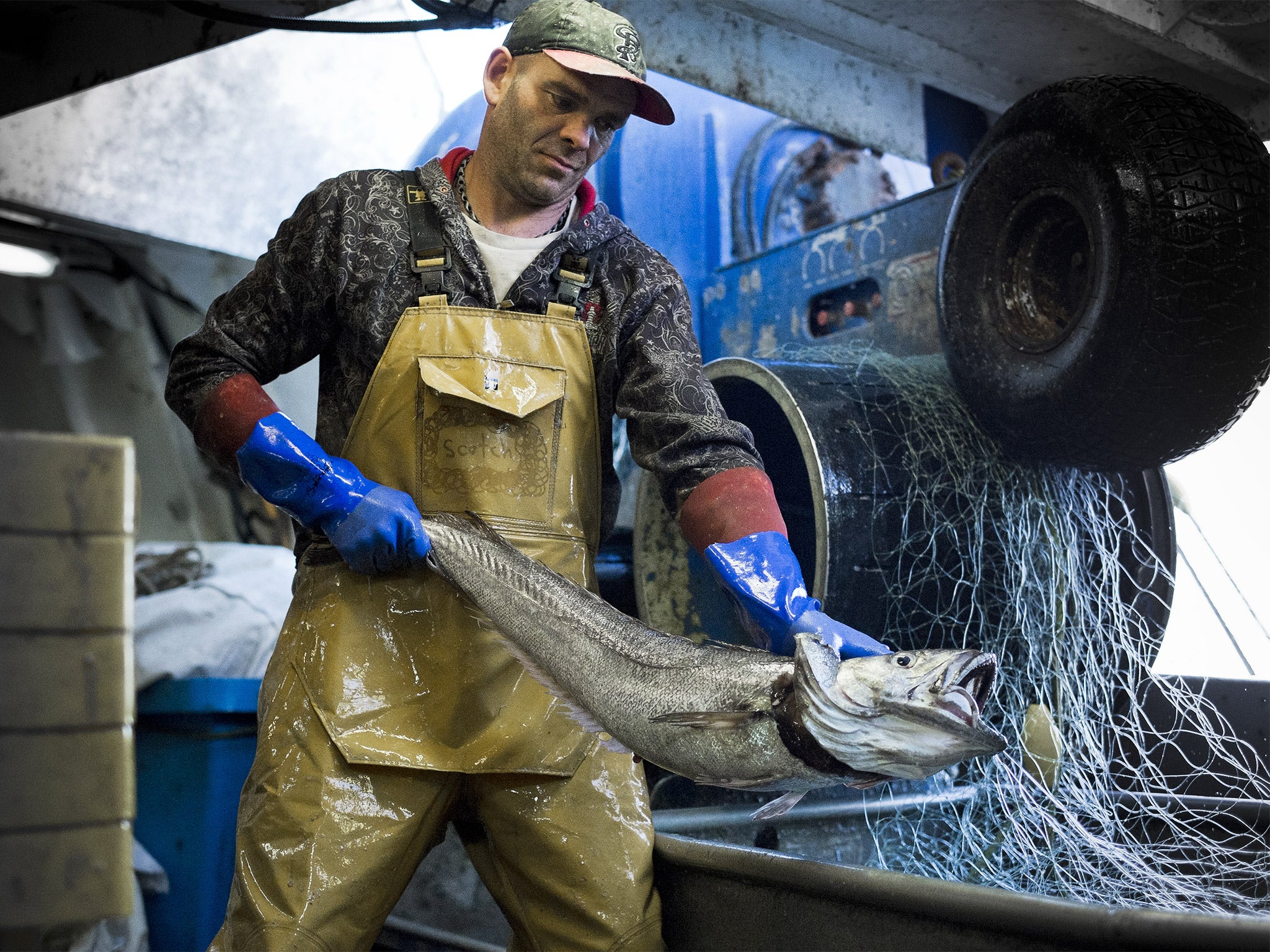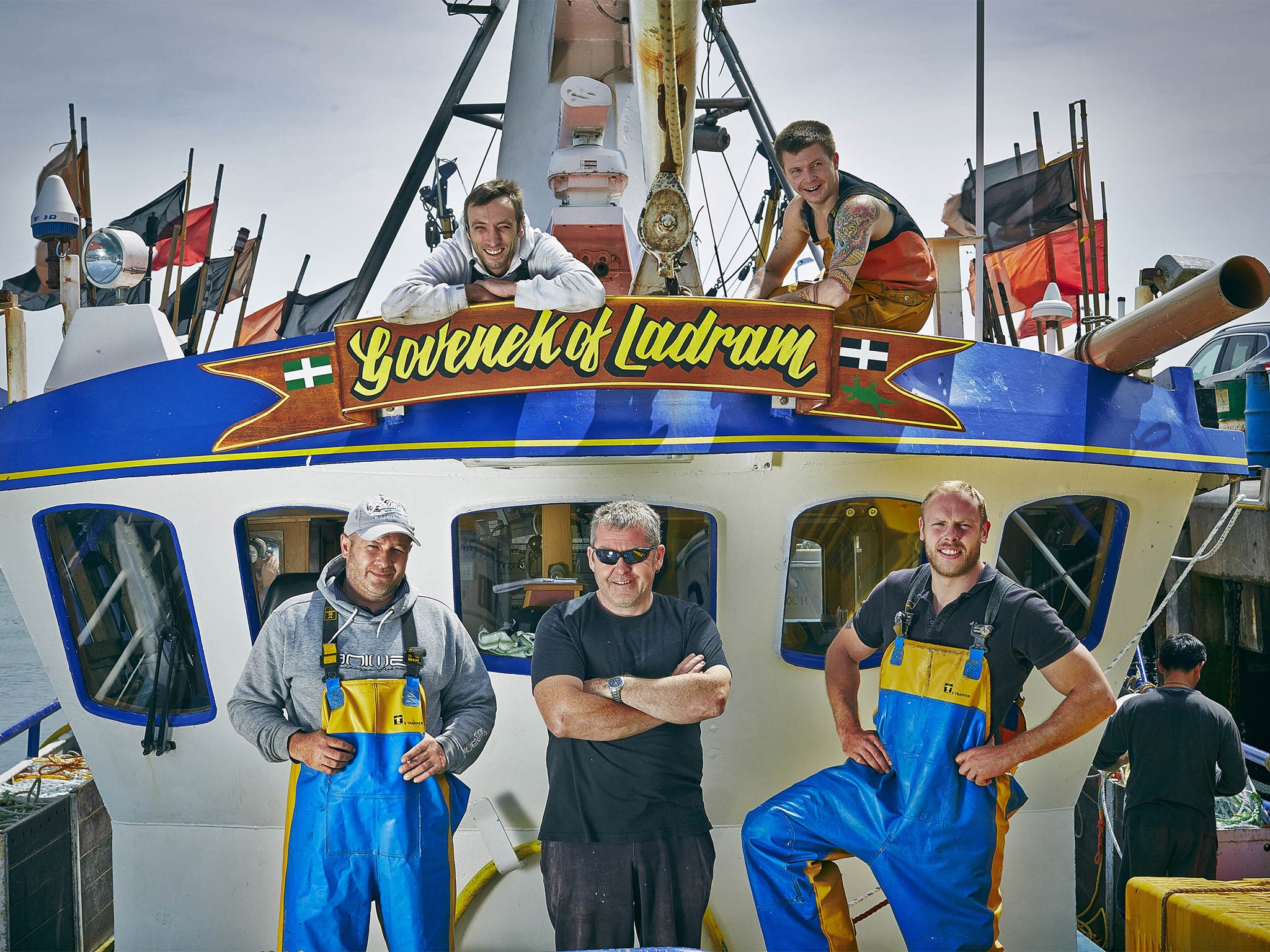Channel 4's The Catch: Fixed-rig cameras have transformed documentary-making
After schools, hospitals and police stations, the format now goes fishing in the Atlantic. Simon Usborne trawls the footage

Your support helps us to tell the story
From reproductive rights to climate change to Big Tech, The Independent is on the ground when the story is developing. Whether it's investigating the financials of Elon Musk's pro-Trump PAC or producing our latest documentary, 'The A Word', which shines a light on the American women fighting for reproductive rights, we know how important it is to parse out the facts from the messaging.
At such a critical moment in US history, we need reporters on the ground. Your donation allows us to keep sending journalists to speak to both sides of the story.
The Independent is trusted by Americans across the entire political spectrum. And unlike many other quality news outlets, we choose not to lock Americans out of our reporting and analysis with paywalls. We believe quality journalism should be available to everyone, paid for by those who can afford it.
Your support makes all the difference.Few filmmakers if any have been required to eat the beating heart of a turbot to earn the trust of their subjects. For James Incledon the very fresh snack was just part of a process of initiation that allowed him to capture life on the high seas like it has never been seen before.
The Catch, which starts on Monday, is Channel 4's latest fixed-rig camera documentary. The now ubiquitous format combines true fly-on-the-wall footage with interviews to reveal people like us going about their daily lives, in this case cruising the Atlantic in search of monkfish, hake and turbot.
To make fixed-rig films set in buildings – schools, hospitals and police stations have all had the treatment – a crew typically works in a mobile studio in the car park outside, controlling what is effectively a network of posh CCTV cameras to observe and record drama in the making. To do the same on the Govenek of Ladram, a 20-metre boat based in Newlyn, Cornwall, Incledon had to squeeze into a windowless cabin deep in the hull itself, next to the head (toilet). A "making of" sequence shows him rolling out of a tiny bunk to start another 17-hour shift.
"It's the worst place to be on a boat if it's going to sink," he says from an edit suite in London, where he and series producer Jo Hughes are giving episode one of eight its final polish. "We had a pipe feeding in our only fresh air but it got stuffy down there and there were a lot of disgusting smells. If it wasn't fish it was poo."
Sinking was at times a real risk. On one of five, nine-day trips on the Govenek, its suitably salty skipper Phil Mitchell, who had conducted the heart-eating ceremony, embarked on a 200-mile, make-or-break voyage into a force- 10 storm. Twenty cameras bolted to the boat captured it lurching over mountainous waves as the crew of seven hauled in their catch.
"It's hard to film big seas because cameras tend to flatten them but the fixed rig got a true sense of how far we were diving and listing," says Incledon, a veteran wildlife filmmaker who also rigged a scallop trawler for the series. "When you look out and see a wall of water way higher than the boat, it's a jaw-dropping experience."
The fishermen wore wireless microphones throughout, only switching them off while they slept. The devices constantly channelled seven voices into Incledon's ears. Braced against his bunk, he would also pan, tilt, zoom and focus each of the rig's 20 cameras while deciding which of four live feeds to commit to tape.

It's an intensive way to make a documentary. but Incledon says the effort pays off in a way that explains the continuing buoyancy of the format. Channel 4 is currently screening the latest Educating series set in schools (Cardiff this time) while its 24 Hours model has taken in A&E departments and police custody cells. The award-winning One Born Every Minute, now in its eighth series on Bitish maternity wards, still delivers big audiences.
"When you walk around with a camera you're always the elephant in the room and, however you do it, people don't interact in the same way," Incledon says. "With a rig, they are so much more candid and raw. It also gives us the ability to be in 20 places at once."

Watch Apple TV+ free for 7 days
New subscribers only. £8.99/mo. after free trial. Plan auto-renews until cancelled

Watch Apple TV+ free for 7 days
New subscribers only. £8.99/mo. after free trial. Plan auto-renews until cancelled
If the netters (never call them trawlermen – "gill netters" lay nets tactically before retrieving them rather than trawl the seabed) are aware of being watched, they don't show it. In episode one, a young rookie is almost literally thrown in at the deep end during the storm voyage, while Mitchell mans the wheelhouse. The film is as much a study of family values and working-class masculinity as it is fish. "These men are so hardy and resilient but also fascinating people and I really wanted to get under their skin like no other show has done," Incledon adds.
Join our commenting forum
Join thought-provoking conversations, follow other Independent readers and see their replies
Comments